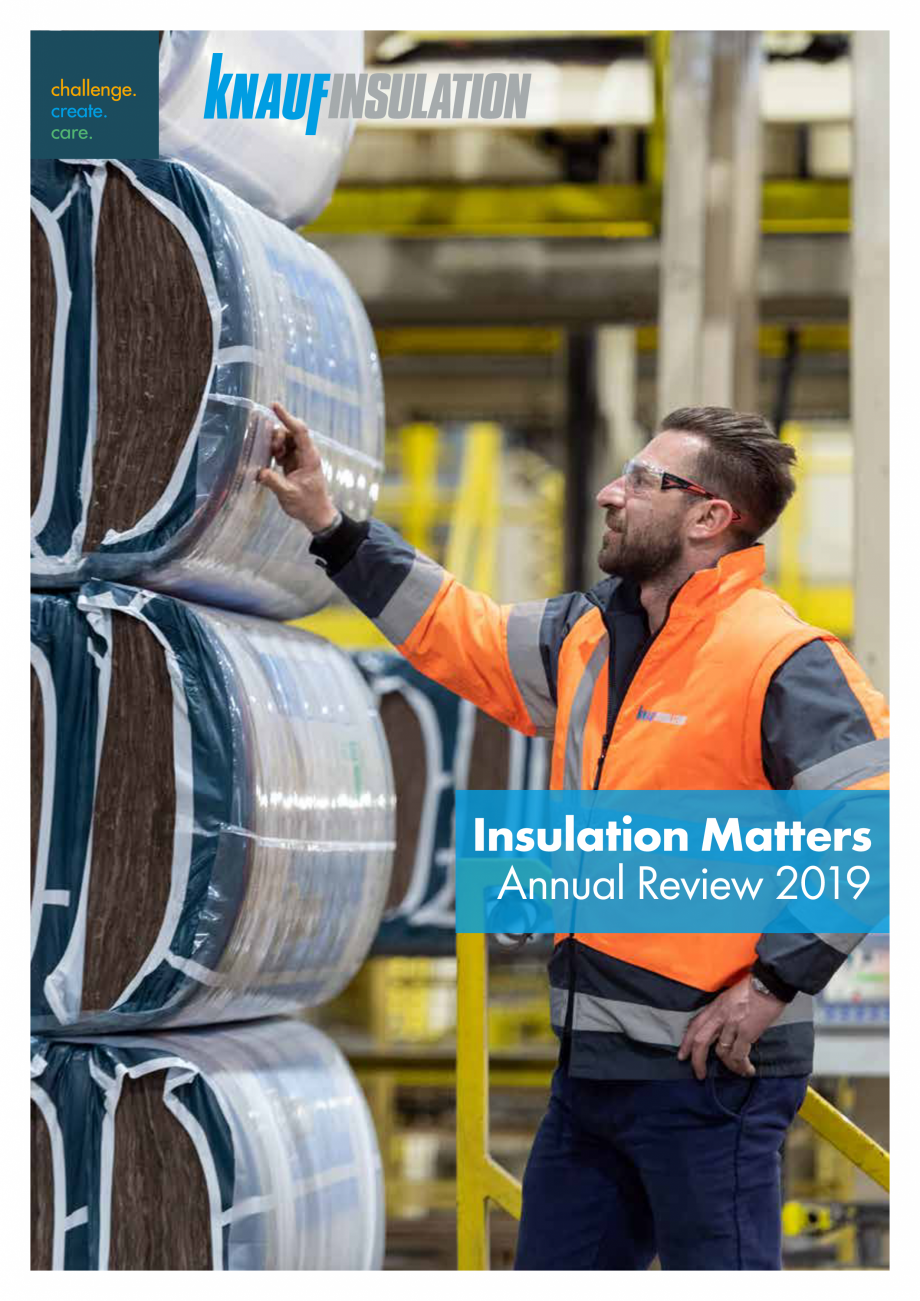Raport de sustenabilitate 2019 KNAUF INSULATION
ral built environment and Paris
Climate commitments underpinned by
revised building directives.
‘NEED TO GET THE SEQUENCE RIGHT’
In 2019, the World Green Building Council
published a position paper that called
for all new buildings, infrastructure
and renovations to have at least 40%
less embodied carbon and be net zero
operational carbon, by 2030.
And by 2050, new buildings,
infrastructure and renovations are to be net
zero embodied carbon, and all buildings,
including existing buildings, must be net
zero operational carbon.
“Knauf Insulation supports this
ambitious plan, but we absolutely need
to get the sequence right,” says Vincent.
“First, we must tackle the biggest carbon
source which is operational energy. This
means reducing demand through high
performing building envelopes, selecting
the right set of equipment and control
systems, then using renewable energy.
“At the same time, through an iterative
process, we should consider embodied
carbon already in the design
... ascunde
Alte documentatii ale aceleasi game Vezi toate
Certificare produs
Certificare produs
































